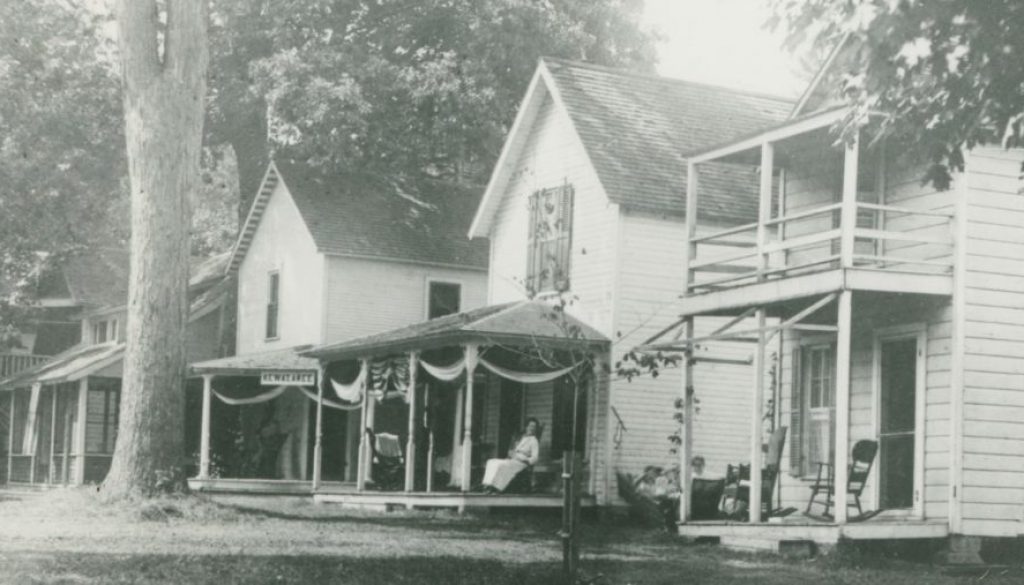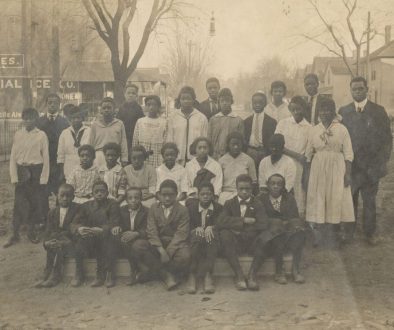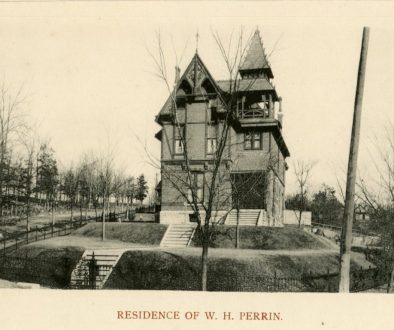The Battle Ground Story: Battle Ground’s Methodist Camps
By Sandy Lahr
Reprinted from the TCHA Member Newsletter of August 1990, vol. 23, No. 8
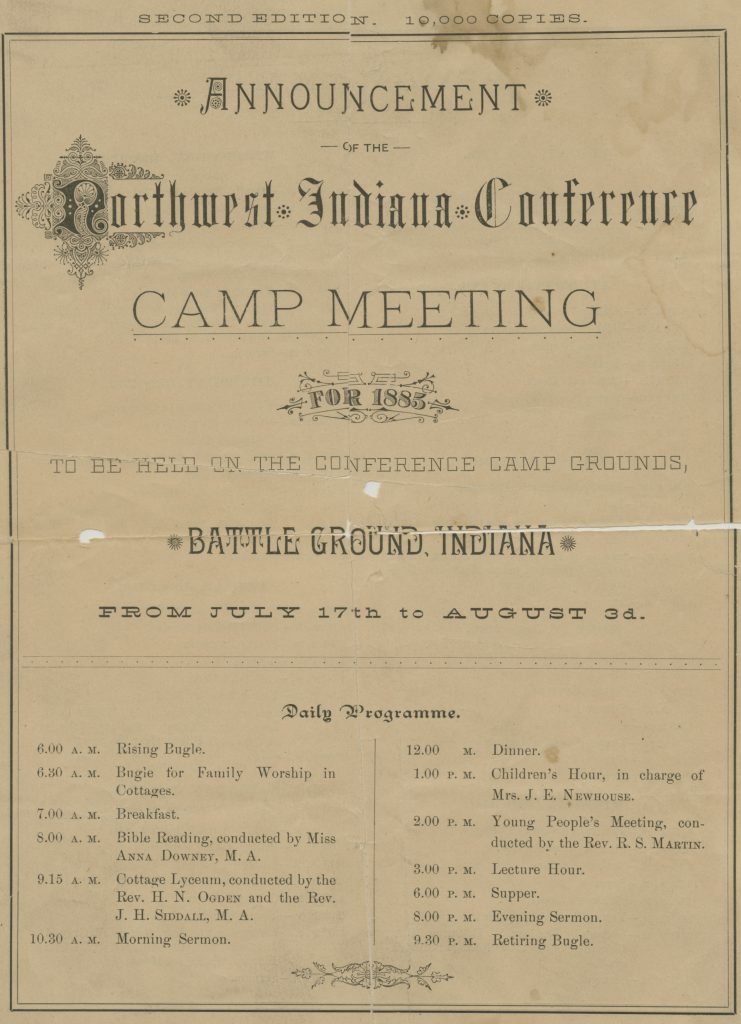
“Stop the singing and give me a chance to shout!!!,” Rev. John W. T. McMullen, so inspired and so full of spiritual emotion, cried out to Prof. Elderkin and his great choir during the 1889 session of the Battle Ground Camp Meeting. Rev. McMullen himself looked like one of the great biblical patriarchs or prophets with his long white beard,silvered hair, and shining face. Such was the emotional atmosphere at those camp meetings with the “pulpit giants,” great orators delivering thrilling messages, extolling everyone to be saved.
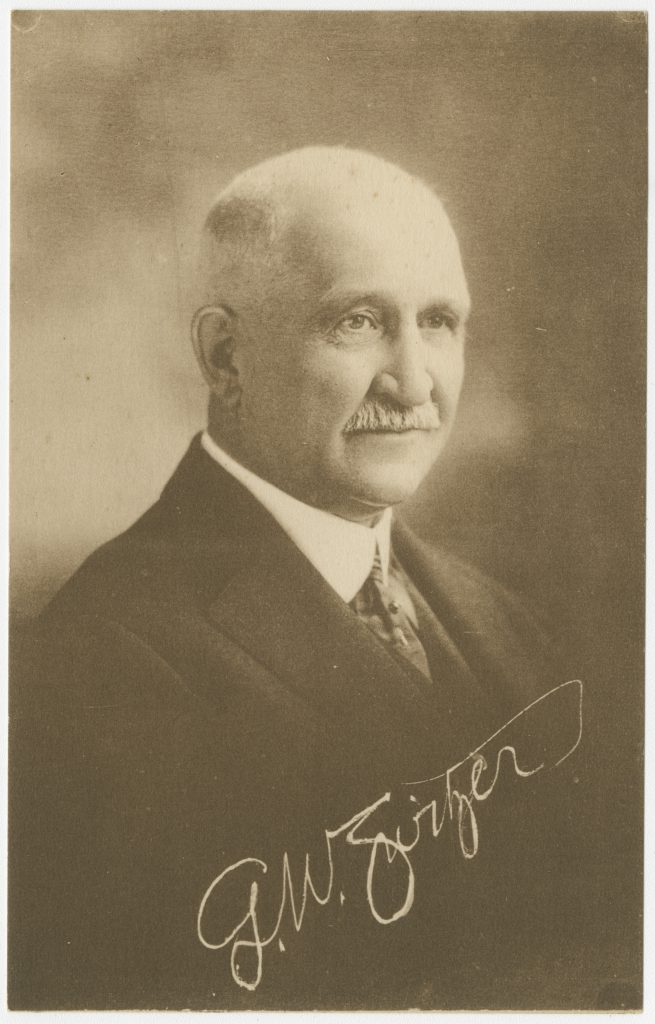
Indeed, the enlarged Camp Meetings of conference scope, organized in 1874, were looked forward to with great expectancy, provided eloquent, spirited, and evangelistic presentations and sermons, and gave spiritual renewal to thousands of believers. In 1908, Rev.George W. Switzer stated that more than 200,000 people had experienced the camp meetings at Battle Ground since the first one in 1874.
In this 1874 organization, the best location for the camp meetings was determined to be near Lafayette. It was later decided that the old Battle Ground Collegiate Institute grounds would be best. However, the conference was financially unable to purchase the grounds.It was necessary, therefore, for an individual, George Wolfer, to purchase the ten-acre tract of land at a cost of $1700. A Camp Meeting Association was formed in 1875. To pay for the land purchase, it offered those who gave $25 or more toward the purchase, a privilege of a 16’ by 24’ building site to be platted about the grounds. A stock company was also organized to sell 250 shares at $10 per share.
All Camp Meeting announcements stressed the excellent location, good housing facilities, fine mineral spring and clear, clean water, and convenient transportation. The “good housing facility” was the 1862 Collegiate Institute building that had 29 rooms and an office. In 1875 both a tabernacle with a 2500 seating capacity and preachers’cottages were built. Construction of the first private cottages also began in 1875. In 1879, two additional tracts of land were purchased.
In the early years of the 20th century, while the Sunday Meetings were still highly evangelistic and emotional, the use of the camp ground and thrust of the Camp Meetings changed to become a religious institute for Bible study, missionary training, Sunday School institutes, laymen’s gatherings and separate boy’s and girl’s camps.
In 1913, the first Indiana Epworth Institute, the name of the youth organization of the church, was held at Battle Ground. By 1916, it was the site of the world’s largest Epworth League Institute. Later activities included tennis,baseball, and handicrafts, along with testimonial campfire services. In 1919,the first swimming pool was built by the youth attending and was filled with water pumped from Burnett’s Creek.
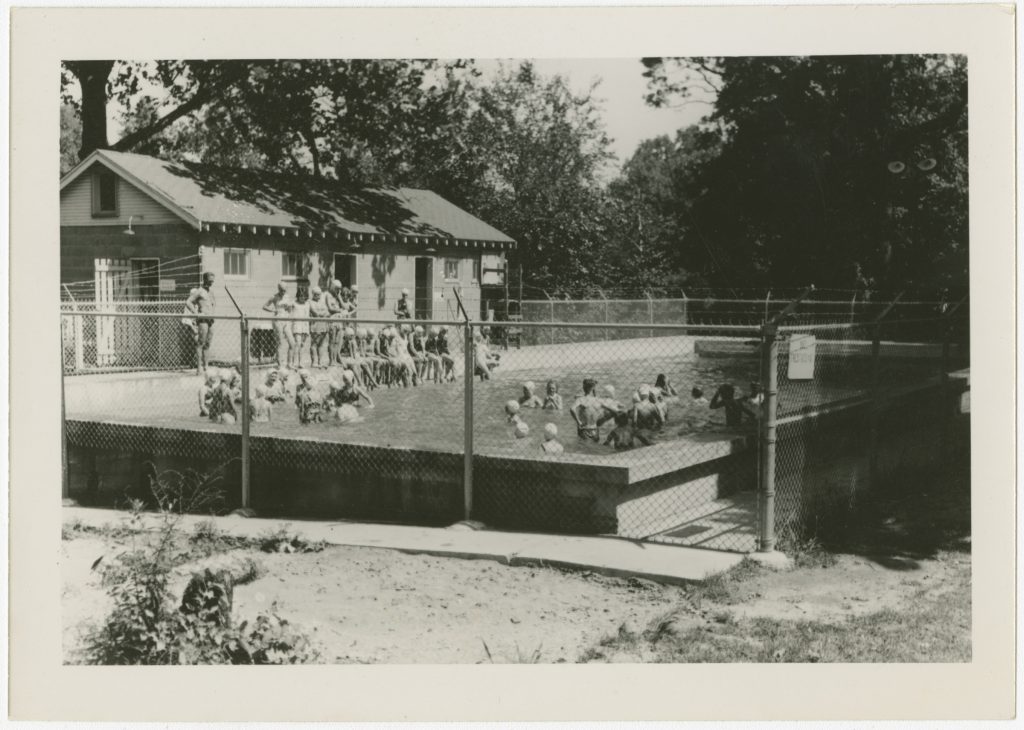
A boy’s camp named “Boyville,” was organized in 1913 and met in 1914 as a tented village on the Tippecanoe Battlefield. Its program was religious, moral and athletic. The first School of Missions was held here in 1921 and the following year the Women’s Home Missionary Society became part of it. The 3M Camp – the first title being“Methodist Missionary Maidens” – was formed in 1923 for girls and instituted the “lantern parade,” a tradition associated with Battle Ground that continued through the years. The 3M Camp merged into the general youth camp program in 1945.
The Bible Conference became the successor to the former Camp Meeting and offered increasingly more varied programs with some of the nation’s next preachers as speakers.
Through this growth period, cottage numbers increased with private/family, church, and chapter Epworth League ownerships. The time spent at the Camp or “Retreat” offered information and inspiration as well as vacation and relaxation. Many friendships formed that continued for decades.
With changing times, the youth camping program continued to expand greatly. By 1963, sixteen summer camps,institutes, and retreats were being held at Battle Ground with over 40 groups holding short-term fall and winter retreats.
However, just eight years later, at the 1971 Annual Conference of the United Methodist Church, plans were announced for the dissolution of the property, as the only visitors to the camp were now those who visited the Tippecanoe Battlefield Memorial south of the grounds. The campground had become a casualty of dwindling attendance, high upkeep costs,and more modern facilities elsewhere. However, the great times had and close friendships formed at Battle Ground Camp still remain in the memories of several generations of Methodists.
For more information about Methodist history in Indiana, visit the Roy West Library of DePauw University:
Indiana United Methodism at DePauw University
Indiana United Methodist Historical Society at DePauw University

